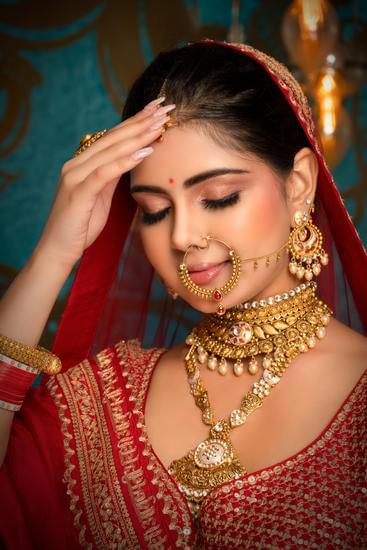Where do wedding rings go once exchanged during the wedding ceremony is a question that holds great significance in many cultures around the world. Wedding rings are not just pieces of jewelry; they symbolize love, commitment, and unity between two individuals. In this article, we will delve into the rich symbolism behind wedding rings and explore the various customs and traditions associated with their placement.
The tradition of exchanging wedding rings dates back centuries, with roots in ancient Egypt, Rome, and Greece. Over time, the meaning behind wedding rings has evolved, but their symbolism as a token of eternal love and devotion remains unchanged. From simple bands to intricate designs, wedding rings come in various styles and materials, each holding its own significance.
While traditional customs dictate where wedding rings go on the fingers of the bride and groom, modern trends have given rise to new ways of wearing these symbols of love. Understanding the significance behind the placement of wedding rings can help couples honor age-old traditions or create new ones that hold personal meaning. Let’s explore the depths of this enduring tradition as we uncover where wedding rings go in different cultures and contexts.
History of Wedding Rings
The history of wedding rings dates back to ancient times, where they were used as symbols of love, commitment, and unity. The earliest known exchange of wedding rings can be traced back to ancient Egypt, where couples would exchange braided rings made from reeds or hemp.
These rings were believed to symbolize eternity, as the circle has no beginning or end. Over time, the tradition of exchanging rings spread to other cultures and civilizations, each adding their own unique customs and designs.
In ancient Rome, wedding rings were typically made from iron, symbolizing strength and permanence. The use of precious metals like gold and silver became more common among the wealthy elite during the Roman Empire. Fast forward to medieval Europe, where the tradition of wearing wedding rings on the fourth finger of the left hand became popular due to the belief in the “vena amoris” or vein of love that was thought to run directly from this finger to the heart.
As time passed and cultures mixed and evolved, different styles and designs of wedding rings emerged. From simple bands to intricate designs with gemstones or engravings, wedding rings have become a personal expression of love and commitment between couples.
Modern trends now include personalized touches such as matching sets or coordinating designs that symbolize unity and partnership between partners. Today, wedding rings continue to hold a special place in ceremonies around the world, signifying a bond that transcends time and trends.
The Anatomy of a Wedding Ring
Wedding rings have been a symbol of love and commitment for centuries, with various cultures and traditions placing importance on the exchange of these special bands during marriage ceremonies. The anatomy of a wedding ring encompasses a variety of elements, from the materials used to the styles and designs that make each ring unique.
Traditional wedding rings were often made of gold, symbolizing wealth and prosperity, while modern trends have seen the rise of alternative metals such as platinum, titanium, and even silicone.
In terms of styles and designs, wedding rings come in a wide array of options to suit every individual’s tastes and preferences. From classic plain bands to intricate engraved patterns, couples can choose rings that reflect their personalities and relationship.
Some may opt for matching sets, while others may prefer different styles that still complement each other. With the advancements in technology, customization options are endless, allowing couples to create truly one-of-a-kind pieces that hold special meaning.
When it comes to where do wedding rings go after the ceremony, traditional customs dictate that the groom places the bride’s ring on her left ring finger during the exchange of vows, followed by the bride placing the groom’s ring on his finger. This ritual symbolizes their commitment to each other and serves as a physical representation of their union.
While this tradition remains prevalent in many cultures, some modern couples may choose to exchange rings in different ways or even opt for non-traditional placements based on personal beliefs or preferences.
Where Do Wedding Rings Go
Traditional Customs
In traditional Western culture, wedding rings are typically worn on the fourth finger of the left hand, known as the “ring finger.” This tradition dates back to ancient Roman times when it was believed that this finger had a vein that connected directly to the heart, symbolizing love and commitment. Many cultures around the world have adopted this practice, making it a widely recognized custom for wearing wedding rings.
In some Eastern cultures, however, such as in India and Russia, wedding rings are traditionally worn on the right hand. In Indian culture, the right hand is considered more auspicious for important ceremonies, while in Russian tradition, the right hand is associated with strength and power. Understanding these cultural differences adds depth to the symbolism of where wedding rings are placed and highlights the diversity of customs worldwide.
Modern Trends
With changing social norms and personal preferences, modern couples are increasingly choosing to personalize their approach to wearing wedding rings. Some couples opt to wear their wedding rings on different fingers or hands based on their individual beliefs or cultural backgrounds. For example, some may choose to wear their rings on their dominant hand or on a different finger that holds personal significance to them.
Another modern trend is the rise of matching or coordinating wedding ring sets that symbolize unity and connection between partners. These sets often feature complementary designs or engravings that create a cohesive look when worn together. Additionally, some couples choose to forego traditional metal bands altogether in favor of alternative materials like wood, silicone, or even tattooed bands as a way to express their unique style and personalities.
Celebrating Diversity
Ultimately, where wedding rings go is a deeply personal choice for each couple. Whether following traditional customs or embracing modern trends, the symbolism of wearing a wedding ring remains a powerful representation of love, commitment, and partnership. By honoring diverse cultural practices and individual preferences, we celebrate the beauty of love in all its forms – no matter where those precious symbols are placed.
Wedding Ring Finger
The ancient Romans believed that this finger had a vein directly connected to the heart, called the “vena amoris” or the vein of love. This romantic notion carried over through centuries and became a symbol of love and commitment.
In some Eastern cultures, such as India, wearing a wedding ring on the left hand is not common. Instead, it is traditional to wear the wedding ring on the right hand. This custom stems from cultural beliefs about energy flow and symbolism associated with different fingers on each hand.
For example, in Indian culture, wearing a ring on certain fingers is believed to bring specific benefits or represent different aspects of life. Therefore, understanding cultural variations in where wedding rings are worn can provide insights into diverse traditions and values.
As modern society becomes increasingly globalized, couples may choose to follow their own preferences rather than adhere strictly to traditional customs regarding where wedding rings go. Some may opt to wear their wedding rings on different fingers or even on chains around their necks or bracelets on their wrists. Ultimately, the most important aspect of wearing a wedding ring is what it symbolizes: love, commitment, and unity between partners regardless of where it is placed on the body.
| Aspect | Description |
|---|---|
| Symbolism | The fourth finger of left hand represents connection to heart |
| Cultural Variations | Different cultures have varying traditions for where wedding rings are worn |
| Modern Trends | Couples may choose non-traditional ways to wear their wedding rings based on personal preference |
Lost Wedding Rings
Losing a wedding ring can be a heart-wrenching experience for anyone. Whether it slips off your finger while swimming in the ocean or accidentally falls down the drain, the loss of such a symbolic piece of jewelry can feel like losing a part of yourself. However, there are also incredible stories of lost wedding rings miraculously being found, bringing hope and joy to those who thought all was lost.
Here are some remarkable tales of misplaced wedding rings and their unexpected reunions with their owners:
- A couple in California lost their wedding rings during a hiking trip in the mountains but miraculously found them weeks later after an intensive search involving metal detectors and sheer determination.
- An elderly woman in New York accidentally donated her late husband’s wedding ring along with a bag of clothes to a local charity. The ring was discovered by a volunteer sorting donations and returned to her, bringing back cherished memories of her beloved spouse.
- A diver in Hawaii recovered a lost wedding ring at the bottom of the ocean while exploring a shipwreck site. Through social media posts and community outreach, he was able to locate the owner and return the precious ring, creating an unexpected bond between strangers.
These stories serve as reminders that sometimes, against all odds, lost wedding rings have a way of finding their way back to where they belong. They hold sentimental value beyond their material worth, connecting people through love, memories, and shared experiences. So if you ever find yourself asking “where do wedding rings go,” remember that sometimes they have a journey of their own before returning home.
Wedding Ring Etiquette
When it comes to the proper etiquette surrounding wedding rings, there are a few key rules and traditions that couples should be aware of. These guidelines help to honor the symbolism and significance of this precious piece of jewelry. Here are some important wedding ring etiquettes to keep in mind:
- Never remove your wedding ring in public unless absolutely necessary. This can be seen as a sign of disrespect towards your partner and marriage.
- Traditionally, the wedding ring is worn on the fourth finger of the left hand, known as the “ring finger.” This custom dates back centuries, with ancient civilizations believing that this finger had a direct connection to the heart.
- It is essential to take care of your wedding ring properly to ensure its longevity. Regular cleaning and maintenance will keep your ring looking its best for years to come.
In addition to these general rules, there are specific traditions associated with wearing and caring for wedding rings in different cultures around the world. For example:
- In some cultures, it is customary for both partners to wear their engagement rings on the right hand before moving them to the left hand after marriage.
- Certain traditions dictate that the engagement ring should be worn closer to the heart, with the wedding band placed on top of it. This symbolizes the idea of love conquering all obstacles.
- In many Eastern European countries, couples wear their wedding rings on their right hands rather than their left hands.
By understanding and respecting these various rules and traditions, couples can ensure that they honor the deep significance of their wedding rings while also embracing cultural customs that may be meaningful to them. Wedding ring etiquette serves as a reminder of the commitment made on one’s special day and throughout a lifetime together.
Ultimately, how you choose to wear and care for your wedding ring is a personal decision influenced by tradition, culture, and individual preference. By following these etiquettes with respect and love, couples can continue to celebrate the enduring symbolism of their union symbolized by these cherished pieces of jewelry.
Tips for Choosing the Perfect Wedding Ring for You and Your Partner
When it comes to choosing the perfect wedding ring for you and your partner, there are a few important factors to consider. One of the first things to think about is the metal type of the ring. From classic gold to modern titanium, there are a variety of options to choose from. Each metal has its own unique characteristics and durability, so it’s essential to pick one that suits your lifestyle and preferences.
Another crucial consideration is the style and design of the wedding ring. Whether you prefer a simple band or a more intricate design with diamonds or gemstones, make sure to select a ring that reflects your personal taste and complements your partner’s ring as well. It’s also important to think about whether you want matching rings or if you prefer different styles that still coordinate well together.
In addition to metal type and design, don’t forget about size and comfort when choosing your wedding rings. It’s essential that the rings fit comfortably on your fingers, especially since you’ll be wearing them every day as a symbol of your love and commitment.
Consider trying on different sizes and widths to find the perfect fit for both you and your partner. By taking these factors into account, you can choose wedding rings that not only look beautiful but also feel comfortable for a lifetime of wear.
| Factors | Considerations |
|---|---|
| Metal Type | Choose based on durability and personal preferences |
| Style and Design | Select a design that reflects personal taste |
| Size and Comfort | Ensure rings fit comfortably for everyday wear |
Conclusion
In a world where traditions often evolve and change, one thing remains constant: the enduring symbolism of wedding rings. These simple bands of metal hold so much significance and meaning, representing love, commitment, and unity between partners. From ancient times to modern trends, the tradition of exchanging wedding rings has stood the test of time.
The question “Where do wedding rings go?” holds more than just a literal answer – it speaks to the deeper symbolism and emotional connection that these rings represent. Whether worn on the fourth finger of the left hand in many Western cultures or on different fingers in other parts of the world, wedding rings serve as a visible reminder of the vows exchanged between partners on their special day.
Despite changes in fashion and customs, the tradition of wearing wedding rings remains strong. While some may opt for unconventional designs or materials, the essence of what these rings symbolize never wavers. As couples continue to exchange these tokens of love and commitment, the enduring symbolism of wedding rings will continue to hold a special place in our hearts for generations to come.
Frequently Asked Questions
What Finger Does Wedding Ring Go On?
The wedding ring traditionally goes on the fourth finger of the left hand, commonly known as the “ring finger”. This tradition dates back to ancient times when it was believed that a vein ran directly from this finger to the heart.
Can You Wear Your Wedding Ring on Your Right Hand?
While it is more common for people to wear their wedding ring on their left hand, in some cultures and countries, wearing the wedding ring on the right hand is acceptable. It ultimately comes down to personal preference and cultural traditions.
Where Does the Ring Go if You Are Married?
If you are married, the ring typically goes on your left hand on the fourth finger, next to your engagement ring if you have one. This symbolizes commitment and love between spouses. However, some people choose to wear their wedding ring alone on that finger.

I have been involved in marriages for over 20 years helping couples and singles understand more about them.





